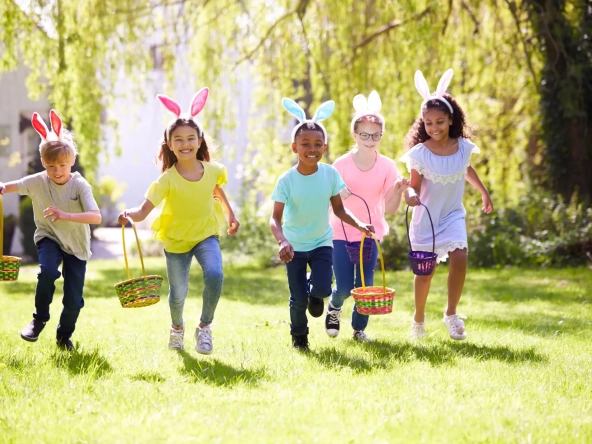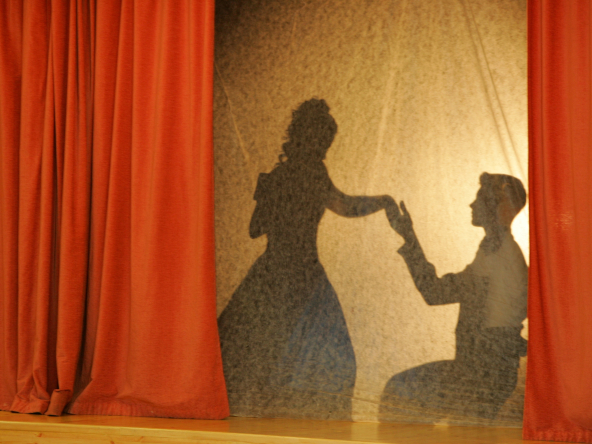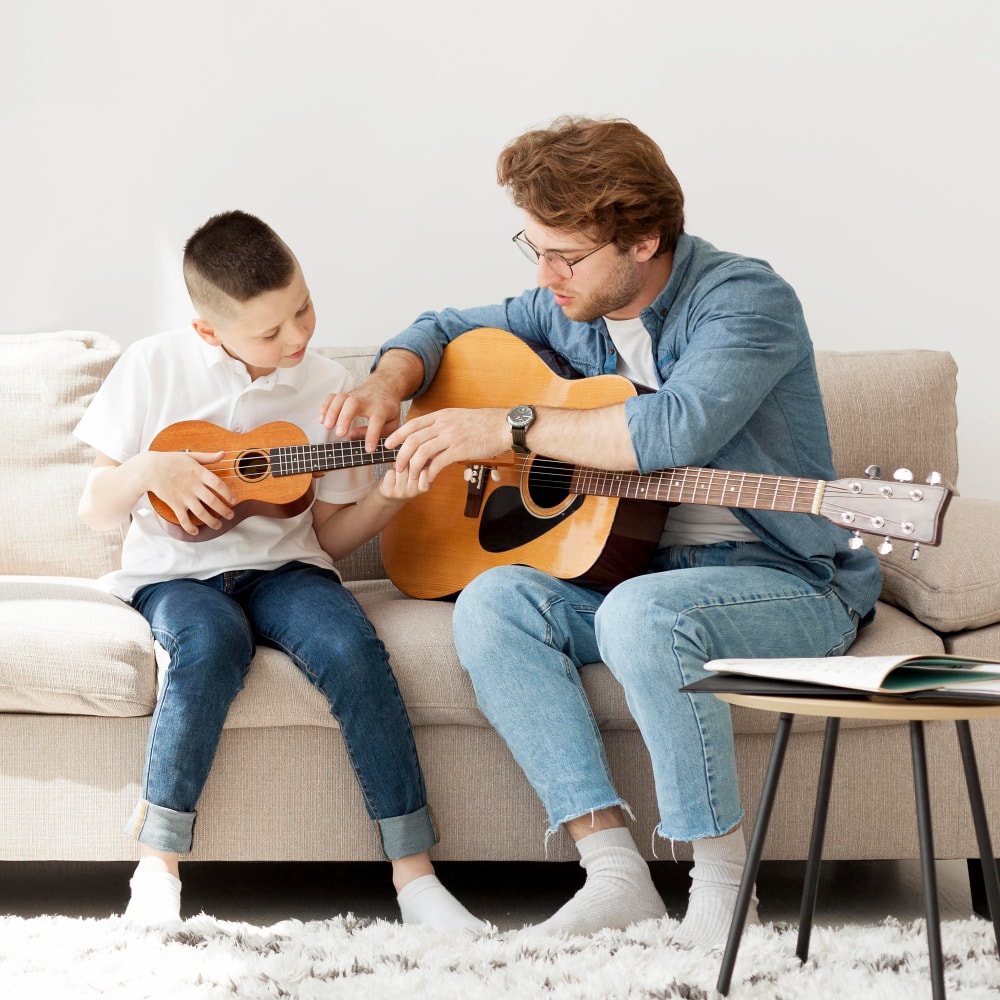
Music is more than just a fun activity for children—it’s a powerful tool for brain development, emotional expression, and lifelong learning.
Teaching music to kids at home nurtures creativity, improves memory, and builds foundational skills in math and language.
Whether you’re a musician or simply a music-loving parent, there are countless fun and easy ways to introduce music activities into your home routine.
Today, teaching music to kids doesn’t require a full classroom, a formal lesson plan or music school, or expensive instruments.
With a little creativity, some engaging materials, and a genuine love for music, you can inspire your children to explore musical ideas, play music, and begin a joyful learning journey that will benefit them for years to come.
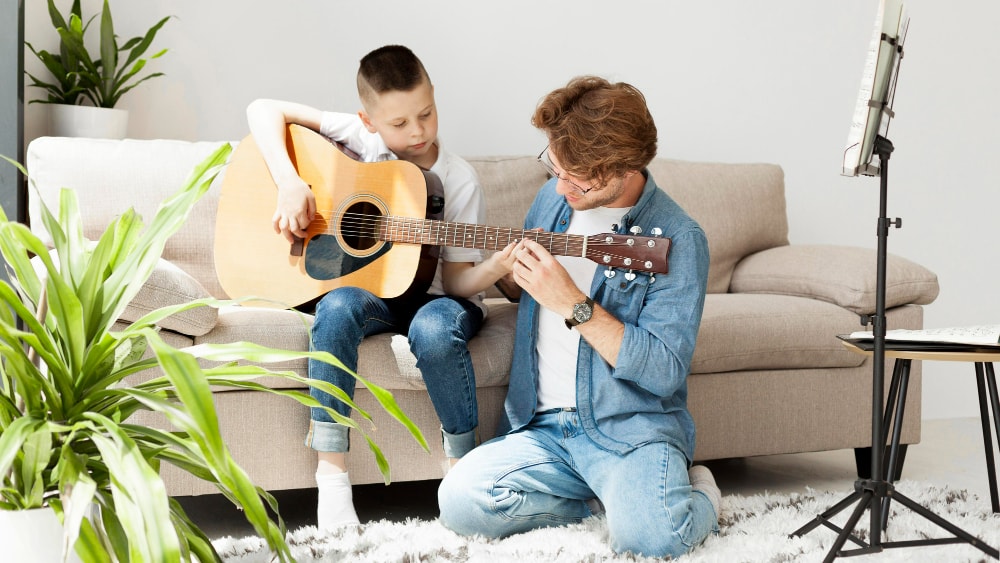
Image source: https://www.freepik.com/premium-photo/tutor-boy-learning-how-play-guitar-long-shot_8680476.htm
Why Teaching Music to Kids Matters
Introducing music to children from an early age comes with a wide range of cognitive and emotional benefits. By allowing them to become music students at home, you’re enriching their home lives.
Music education helps children:
Develop better language and literacy skills
Improve focus, memory, and attention span
Build confidence in learning and self-expression
Strengthen motor coordination through physical movement
Learn discipline and patience by following a music lesson plan
Foster a love of culture by exploring traditional music, hip-hop, and global sounds
By teaching kids music in a way that feels like play, you help them internalize complex ideas like rhythm, musical notes, and chord progressions naturally and joyfully.
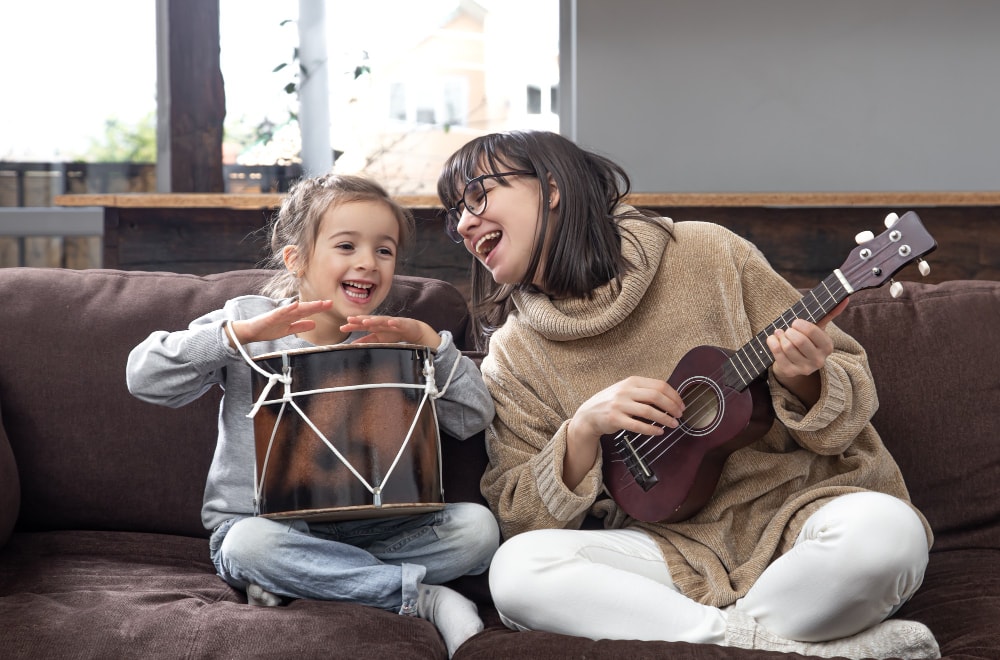
Fun and Easy Ways to Teach Music to Kids at Home
Learning music is a form of playing and bonding with your children. They don’t have to be enrolled as students in formal music school. You can run your own music class in the comfort of your home.
Ready to bring the joy of music into your household?
Here are practical and fun methods to start teaching music to your children without needing a formal class or advanced musical background:

1. Start with Nursery Rhymes and Favorite Songs
Singing nursery rhymes are the building blocks of early music education. They teach kids about rhythm, melody, and language all at once.
Singing favorite songs together is a great way to introduce musical patterns and concepts in a familiar format.
What to do:
Sing nursery rhymes daily during routines (mealtime, bedtime, playtime).
Clap or tap along to the beat to aid children in learning rhythm. You can play videos as you do this.
Ask your child to make up their lyrics or change their own pattern in songs.
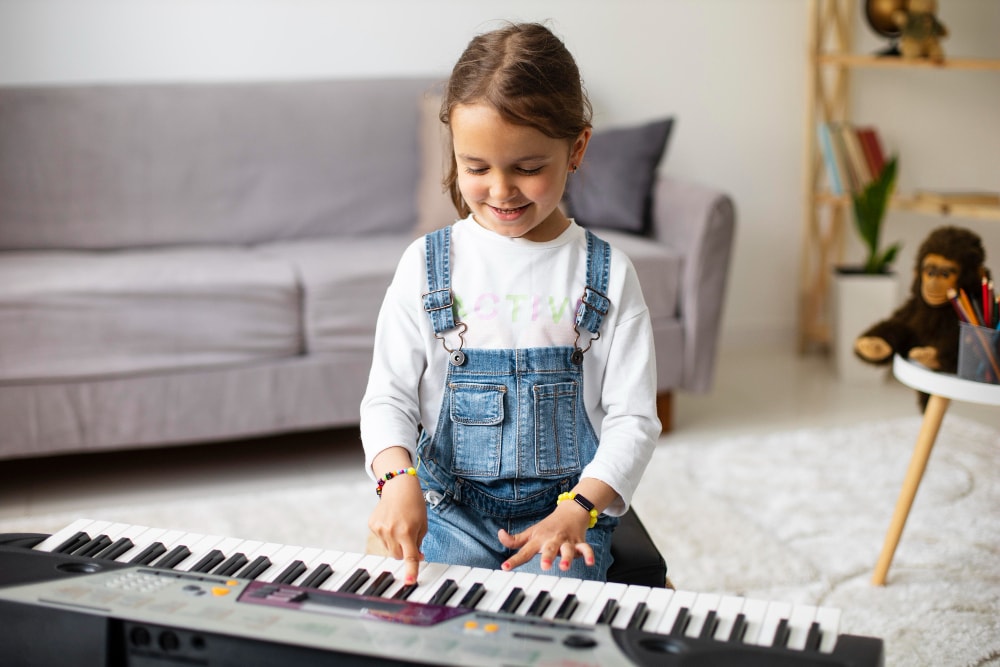
2. Turn Your Home Into a Mini Music School
You can create your own music classroom at home. Transform your space into a dynamic music play environment by using simple household items and visual aids.
DIY materials:
Create cut-outs of musical notes on paper and practice identifying them. This is especially helpful in learning music theory and concepts.
Make your own percussion instruments using rice-filled containers or pots and pans.
Use solfege hand signs to teach pitch in a visual and physical way.
Activity tip: Draw a giant staff on a poster board and place note cards on it to read music together.
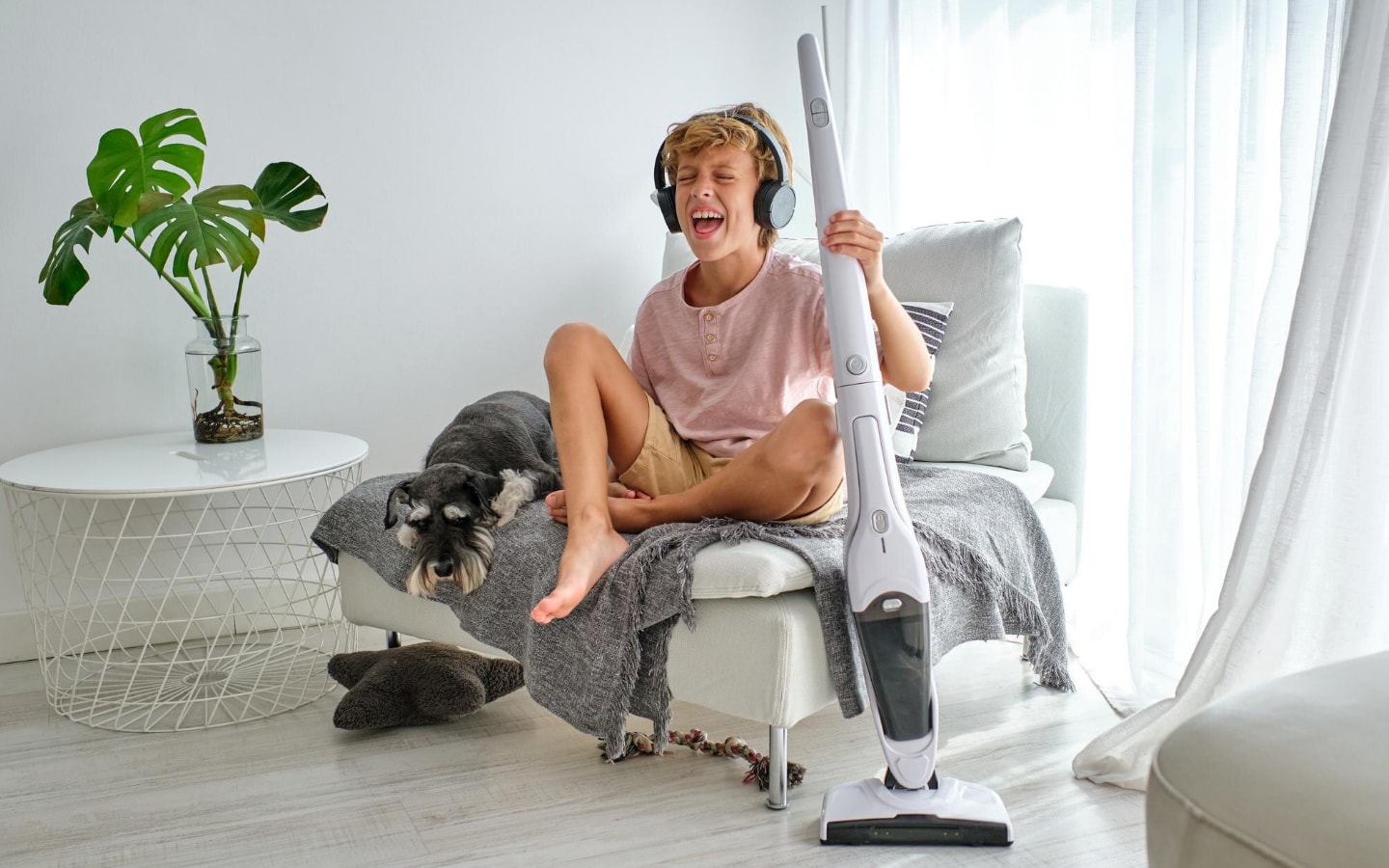
3. Use Movement Activities to Teach Rhythm
Children who are learning music can understand concepts better through movement. Physical movement helps connect their brains to musical patterns.
Fun activities:
Play a “freeze dance” game where kids dance to music and freeze when the sound stops
March or dance around the house to the beat of a piece of music
Clap and stomp out rhythms from songs they already know
4. Introduce Instruments and Sound Exploration
You don’t need to own a piano to teach music. Many music students start learning with affordable instruments like recorders, ukuleles, or keyboards—or explore sound using what they already have.
Explore:
Allow kids to interact with drums, strum guitars, or press piano keys to learn about pitch and volume freely.
Listen carefully and talk about the different sounds each instrument makes.
Use apps, videos, and other online tools to experiment with digital music-making.
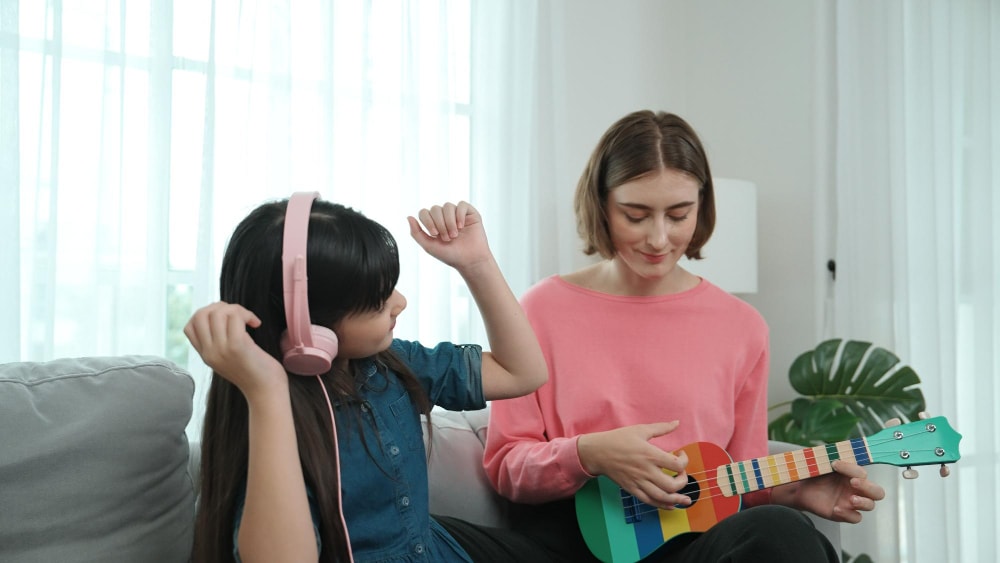
5. Make Music Lessons a Game
When teaching music to kids, games can be one of the most effective strategies.
Game ideas:
“Guess the Sound”: Play an instrument behind your back and have your child guess it
“Musical Chairs”: Play music while walking around chairs and pause it to stop
“Note Hunt”: Hide notes around the house and let your child find and identify them
6. Incorporate Video Lessons and Online Resources
Use video lessons from skilled music teachers and musicians to help your child learn in a structured but entertaining way.
Many music teachers create online courses to aid your children’s music learning, and several are available for free.
Online tools:
YouTube has thousands of free music classes and tutorials for kids
Platforms like Prodigies Music or Hoffman Academy offer structured music courses with clear lesson plans
Educational music games and apps reinforce theory, rhythm, and musical notation
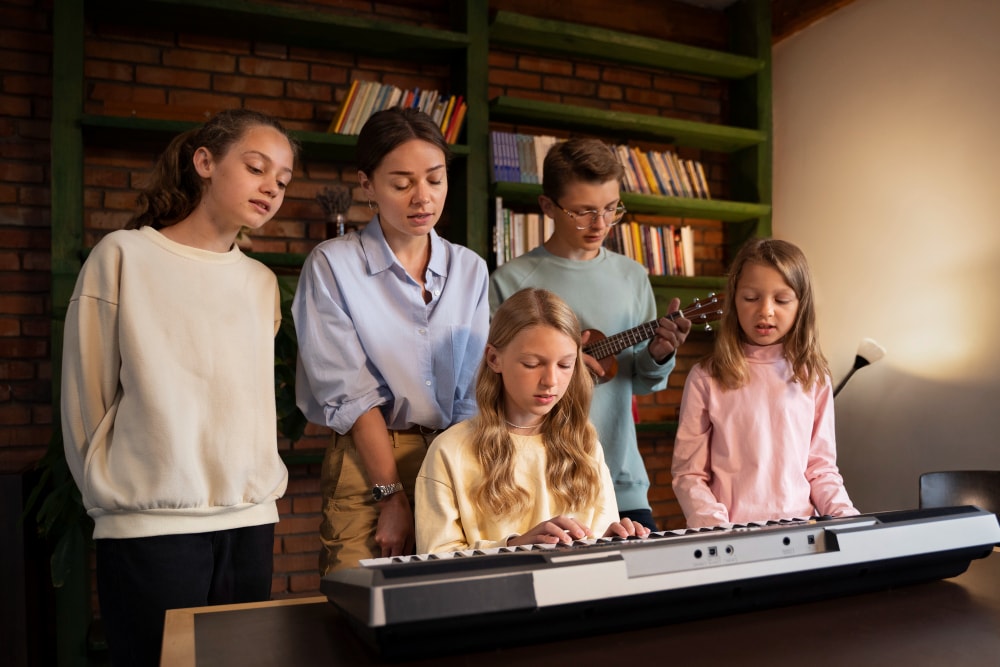
7. Teach Basic Music Theory in Fun Ways
Introducing music theory doesn’t have to be boring. Keep it playful by blending instruction with activities.
Teaching tips:
Explain notes, rhythm, and chord progressions with visuals and audio
Write out music theory and music lessons in plain language
Practice drawing musical notes and learning what each symbol means
Use color-coded instruments or stickers to help associate sounds with notes
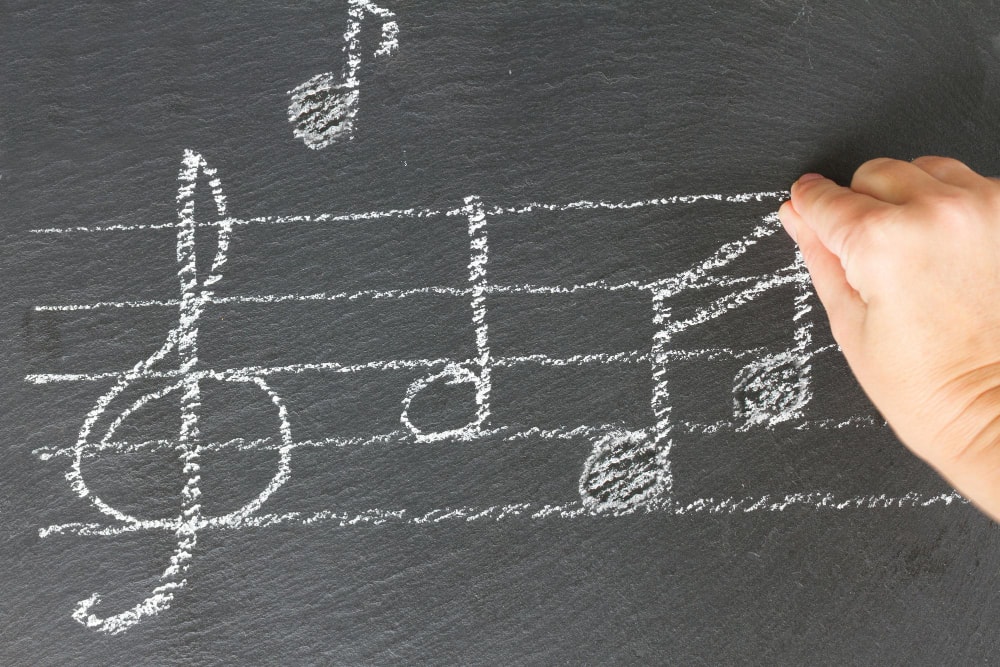
Image source: https://www.freepik.com/premium-photo/music-notes-black_27216226.htm#from_element=cross_selling__photo
8. Encourage Songwriting and Creativity
Empower your little music students to write their own songs, even if they’re silly or simple.
This boosts imagination and learning. This also helps them better understand music structure.
Creative ideas:
Have your child choose a subject and write lyrics together
Experiment with rhyming and melodies using toy keyboards or apps
Let them perform their song and even record it for playback
9. Play and Listen to a Wide Range of Music
Expose your child to all types of music as they’re learning—from classical to hip hop, traditional music, jazz, and beyond. This helps them develop musical taste and a deeper appreciation of music.
What to do:
Create a family playlist and include everyone’s favorites. You can also encourage your kids to propose more ideas for playlists (such as themed playlists)
Set aside time to listen to music actively and talk about what you hear
Encourage them to dance or draw while they listen, reinforcing creative expression
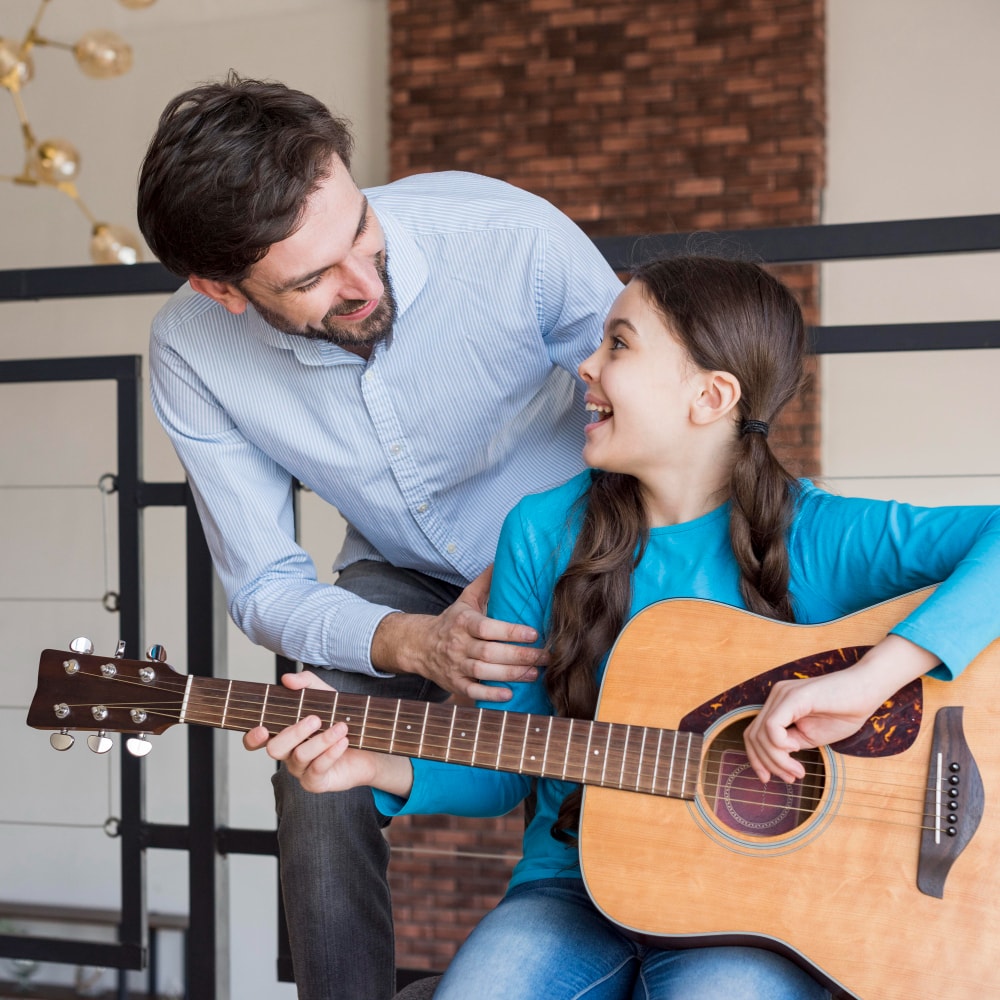
10. Stay Consistent and Celebrate Progress
Like any form of learning, teaching music requires consistency. The more your kids engage with music, the more confident and skilled they’ll become.
Tips for parents and teachers of young music students:
Schedule regular music lessons or music classes at home
Celebrate small wins, like learning a new note or rhythm
Stay positive and make the learning journey a source of excited feelings and joy
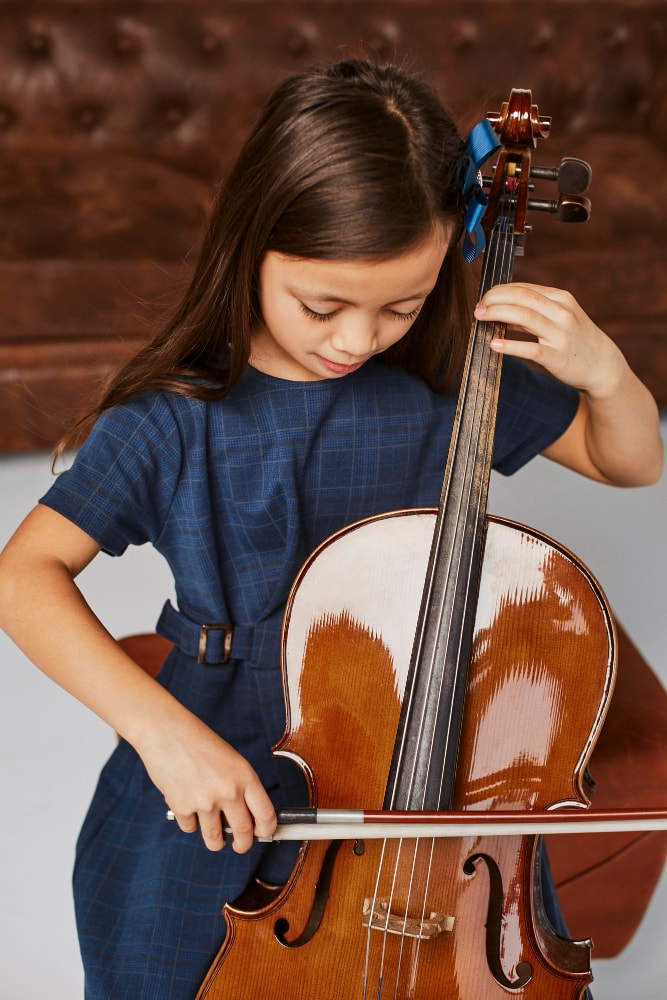
Teaching Kids Music Should be Fun and Uplifting
Teaching music to kids at home is one of the greatest gifts you can offer as a parent or educator.
With a balance of structured lessons, playful exploration, and creative expression, children can build a deep love for music allowing them to become lifelong students of the arts.
In your home in Camella, you’re set up to cultivate music skills and art appreciation in your kids. Camella allows students of all kinds and ages the space to grow and explore their interests, including music.
You don’t need to be a professional to guide your kids through this beautiful journey—just a willingness to sing, dance, play, and explore new things together.
Remember, the goal of learning music isn’t perfection but passion. Through games, songs, instruments, and movement, you’re not just teaching notes—you’re inspiring the next generation of musicians, thinkers, and dreamers.
So grab a shaker, turn up the volume, and let the music play!
